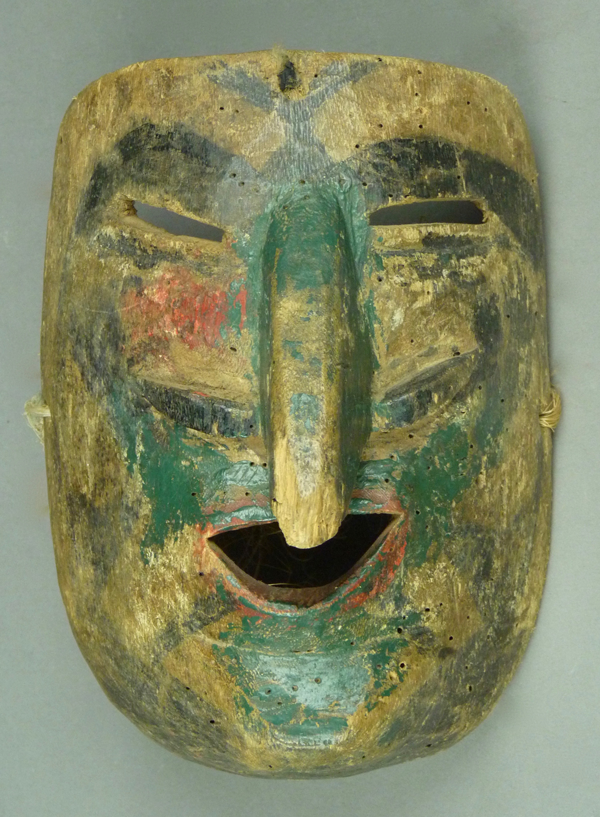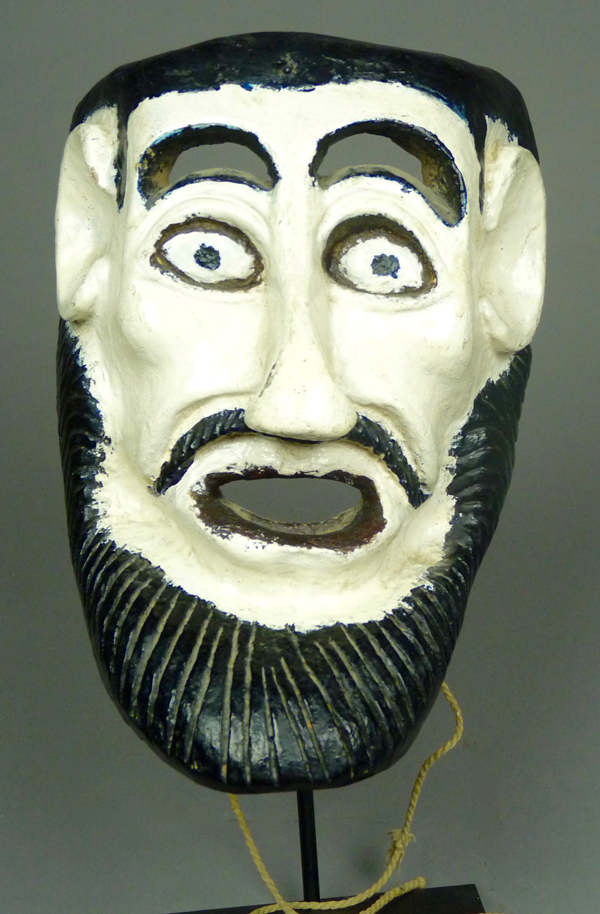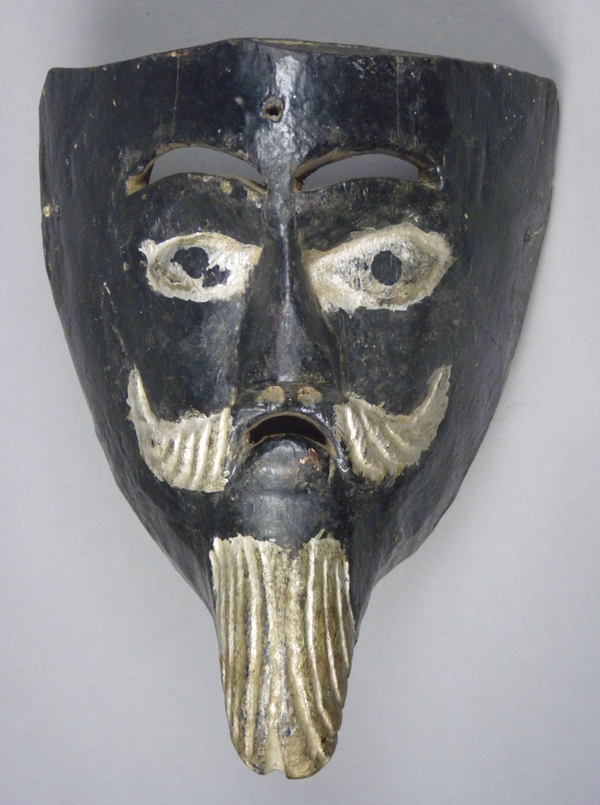After digging through my collection of masks, I am nearly finished with those from the Moros y Cristianos dance and related dances. In this post I bring together a variety of unusual but interesting masks from these dances, which did not fit so neatly with others from their respective states. Almost all of them are special gems in terms of artistry and rarity, but no two are alike.
The first, a gift from Robin and Barbara Cleaver in 1988, was reportedly a Moro mask from the Mexican State of Puebla. Moors with green faces are uncommon in Mexico. In my view, as you may recall from my posts about Xantolo masks from Hidalgo and Veracruz, masks with unrealistic colors such as yellow, blue and green, are frequently worn by dancers who depict the bodies or souls of the dead.
https://mexicandancemasks.com/?p=5116
One could suppose that this mask might represent a Moor or Santiaguero that has been recycled for some other dance such as Xantolos or Carnaval (Mardi Gras).
I have long admired the jolly mouth on this mask.




